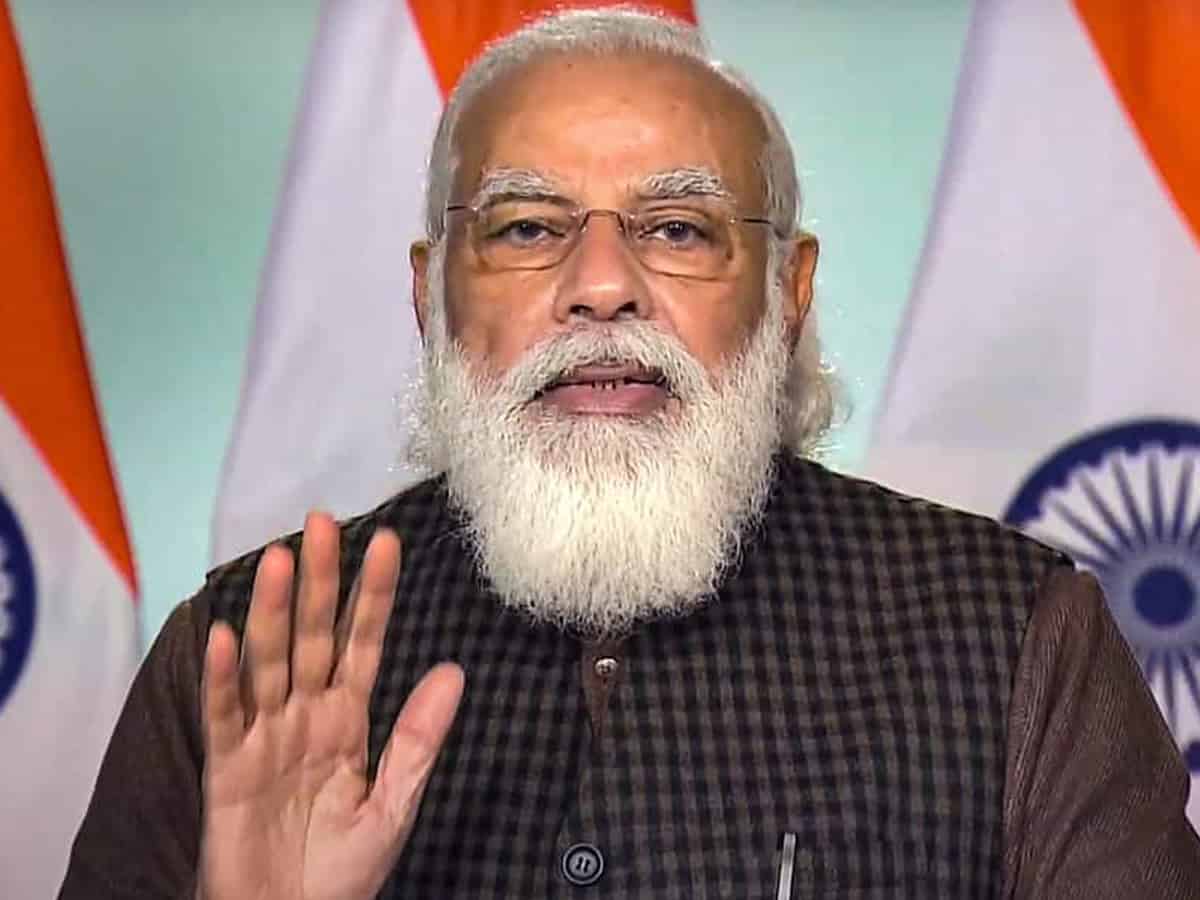
An unabashed push for privatization has been launched by the Modi government. This strikes at the very root of the Nehruvian dream of a self-reliant India, through the policy of according the commanding heights of economy to the public sector, with adequate space for private sector. This Nehruvian model has since come to be known as the model of ‘Mixed Economy’.
What the Modi government is doing is akin to selling away the family silver, in order to pay up its grocery or kiran bills.
Now, the Modi government has embarked on the mindless and the suicidal policy of privatisation and in the process it is dismantling profit-making Public Sector Undertakings (PSUs), which were given the status of Nava-Ratnas.
A turnaround can be brought about in even the non-profit-making units by infusing capital and introducing managerial changes.
Turnaround can be brought about in loss-making units. Distress sales or just a sellout is not the only logical or rational solution.
Painstakingly, plants were set up during the tenure of the Congress governments.
The same are being sold away for a sing-song price, who neither value it nor are they connected to the ethos. Air-India is the proud carrier of the National Tricolour. If the Srinagar Airport was not under Government control, Indian Troops could not have been swiftly moved in on October 26, 1948, to drive back the attack launched by Pakistan. Indian learnt to her cost, when Indian Air Force Gnats were starved of aviation fuel during the India, Pakistan War in 1971, forcing the hand of Indira Gandhi to Nationalize Caltex, Esso and Burmashell.
Vizag Steel Plant
The Vizag Steel Plant is a shining symbol of the Nehruvian concept of building up public sector, especially in areas where private sector investments was unlikely to come in.
The Vizag Steel Plant is the symbol of the great Agitation, with the fiery slogan of Vishakha Ukku, Andhrula Hakku.
Dr Marri Channa Reddy was Union Steel & Mines Minister in the Indira Gandhi government from March 16, 1967, to April 27, 1968, when he had to resign, following an adverse Supreme Court verdict. It was during the tenure of Dr Channa Reddy that the nitty-gritty was worked out and Prime Minister Indira Gandhi announced in Parliament that Steel Plant will be set up in Visakhapatnam.
Indira Gandhi laid the foundation-stone on January 20, 1971. It went into production in 1991, but formally, on August 1, 1992, Visakhapatnam Steel Plant, with 3 million tonne capacity, was dedicated to the nation by the then Prime Minister P V Narasimha Rao.
In 2006, the then Prime Minister, Dr Manmohan Singh, laid the foundation-stone8 for the Vizag Steel Plant Expansion Project from 3.2 MT to 6.3 MT.
Borrowings to Fill Budget Holes
The Union Budget presented by Union Finance Minister Nirmala Sitharaman shows a borrowing of Rs 10 lakh crore. Where does all this money go? There are no fresh investments being made.
For all practical purposes, this borrowing Rs 10 lakh crore will be used to meet the Revenue Shortfall of about Rs 4 lakh crore, growing Revenue Expenditures of Rs 4.65 lakh crore and Disinvestment Shortfall of Rs 1.5 lakh crore.
Rs 10 lakh crore borrowings will be used up to fill these gaping holes in the Budget. There is no fresh investment forthcoming in the Budget, which can stimulate demand and kickstart the economy.
This is a very serious situation, which is not only worrying but even scary.
In her Budget Speech, Nirmala Sitharaman said, “In spite of Covid-19, we have kept working towards Strategic Disinvestment. A number of transactions namely BPCL, Air India, Shipping Corporation of India, Container Corporation of India, IDBI Bank, BEML, Pawan Hans, Neelachal Ispat Nigam limited among others would be completed in 2021-22. Other than IDBI Bank, we propose to take up the privatization of two Public Sector Banks and one General Insurance company in the year 2021-22. This would require legislative amendments and I propose to introduce the amendments in this Session itself.”
Disinvestment
Disinvestment is not new. But, then, the earlier governments, even while going in for disinvestment, made a distinction between strategic and non-strategic units.
Strategic sectors included defence, atomic and space, which were non-negotiable. Non-strategic sector included others like hotels, etc., where disinvestment was carried out.
The Modi government has identified 18 strategic sectors, including banking, insurance, steel, fertiliser, petroleum and defence equipment, where it will retain only a limited presence.
Maharashtra, Bank of India, Indian Overseas Bank and the Central Bank of India are among the four Public Sector Banks shortlisted for Privatization.
Banks Nationalization
Indira Gandhi brought about the Banking Companies (Acquisition and Transfer of Undertakings) Ordinance, 1969, on July 19, 1969. In 1970, the judiciary struck down the banks’ nationalization on grounds of awarding adequate compensation. Indira Gandhi brought about the Constitution 25th Amendment that curtailed the Right to Property and permitted the acquisition of private property by the government for public use, on payment of compensation, which would be determined by Parliament and not the court. Thus, she gave effect to the banks’ nationalization finally in 1971.
On the Golden Jubilee anniversary of the nationalization of banks, there is a concerted move to reverse the policy.
When Indira Gandhi nationalized 14 banks, there was sound logic. These banks contained 85 per cent of the deposits. Indira Gandhi’s intent was to give her government greater control of credit delivery for the vulnerable sections of the society.
Now, Modi government idea of Privatization is to increase access to credit facility for the corporates.
Venkat Parsa is a senior journalist and writer based in New Delhi.
Views expressed are personal

